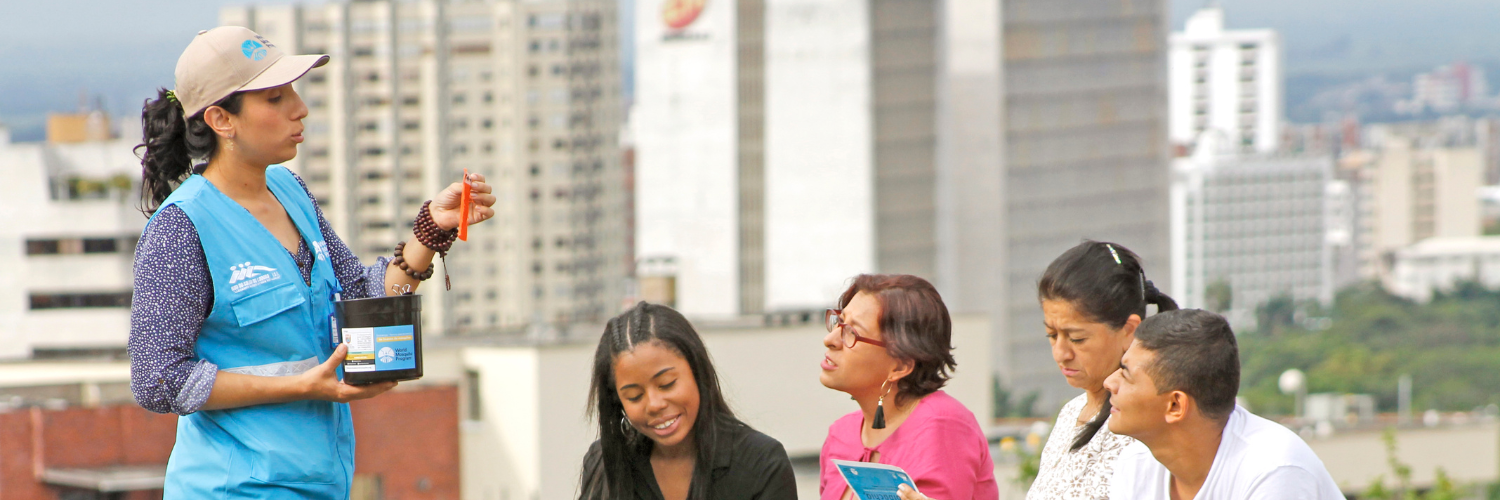Published Date: 24 May, 2022
No one wants to watch their loved ones suffer the fever, rash, nausea and body aches that often accompany dengue. But seeing a child suffer can be particularly gut-wrenching.
In the last few years, Nguyen Thi Den has had to help care for not one, but three sick family members – including her two grandchildren.
“Three people in my family got it, my daughter and granddaughter got it first, then around half a month later my grandson, who was in secondary school got it too,” Den recalls.
“She was too young, so we were worried sick”
Den and her family live in Thu Dau Mot, a small but thriving urban centre in Southern Vietnam. Southern Vietnam claims 70% of Vietnam’s dengue cases and 80% of dengue deaths.
When Den’s daughter and granddaughter contracted dengue, the family’s world was turned upside down. Not only was Den’s daughter battling the illness herself, she was also trying to care for her young child, with the support of her mother and extended family.
“My granddaughter was really too young when she got it, so the whole family was very anxious. After one week in the hospital, my granddaughter’s health seemed to have deteriorated a lot.”
Anyone can experience the more serious symptoms of dengue. But children, particularly those under the age of five, are at a greater risk of severe dengue illness. Den’s granddaughter thankfully recovered – but the experience left a mark on the family.
The social cost of dengue for children and their families
The COVID-19 pandemic has added further complexities to families living in dengue-affected areas. When Den’s grandson contracted dengue, the extra burden on the healthcare system made access to medicines even harder. He was able to continue his schooling remotely thanks to the online learning systems put in place for COVID-19 lockdowns, but for many children, this isn’t possible.
Around the world, many children with dengue are forced to miss classes. According to Nguyen Thi Thanh Nga, a community health promoter in Thu Dau Mot, the impact of dengue also ripples out to the whole family.
“In recent years, there have been many dengue fever outbreaks which have affected the health and wellbeing of the locals, mainly the children. If a child is in hospital, the parents have to focus on taking care of their child and their income is heavily impacted,” Nga says.
This financial burden can add additional stress and uncertainty during a time when a family is at its most vulnerable. And in some cases, it can even prevent sick patients from accessing treatment.
Having multiple people in a family contract dengue worsens this burden – and it’s not uncommon. Aedes aegypti, the mosquito responsible for spreading dengue, doesn't typically fly far from where they’re born. This means that if dengue is present, either in a mosquito or a person, it can spread to multiple members of the household.
In some cases, a mosquito carrying the dengue virus may bite multiple people in one sitting. In others, someone already infected with dengue may be bitten by a mosquito who then bites another family member and spreads the virus.
Thu Dau Mot welcomes Wolbachia
Traditional methods of mosquito control such as spraying pesticides, burning incense and removing bodies of water were not doing enough to stop these outbreaks. But this May, Thu Dau Mot and My Tho, another city in Southern Vietnam, are excited to welcome Wolbachia, the World Mosquito Program’s groundbreaking solution to dengue.
Wolbachia is a natural bacteria that prevents mosquitoes from transmitting viruses like dengue, chikungunya, Zika and yellow fever. When mosquitoes carrying Wolbachia are released, they breed with wild mosquitoes and pass the protection down to future generations. Over time, this dramatically reduces cases of dengue.
In her role as community health promoter, Nga helped to raise awareness about Wolbachia in Thu Dau Mot.
“The government used leaflets, newspapers, the internet, Facebook and television, so all the information is out there. I also took live videos during the implementation and I posted them on the online group so the people could learn more and understand the importance of the World Mosquito Program,” Nga says.
The community has embraced Wolbachia as a solution to their dengue problem. As a parent and grandparent, Den is excited for a future where her community doesn’t have to fear their children ending up in hospital.
“I really looked forward to mosquitoes being released in my area. I would be delighted and grateful to the local government for taking care of the people here. That would be great, because dengue is a very dangerous disease. If we can prevent the spread of dengue then that would improve our living standard, and I’d feel much more secure about my children’s health.”
Want to learn more about other communities welcoming Wolbachia? Visit our global progress page.

